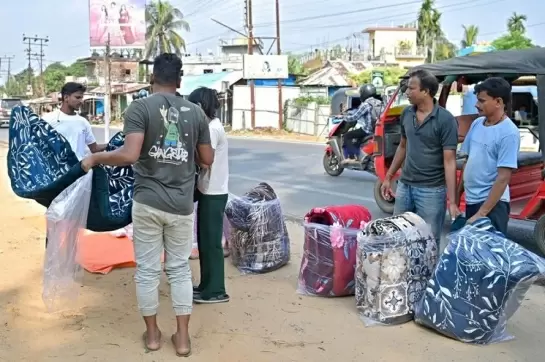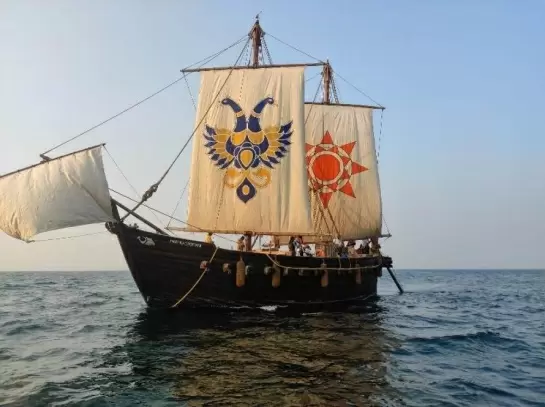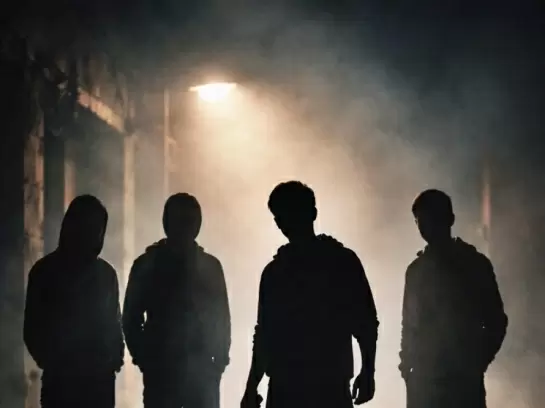Indian Navy's warlike mission in stormy seas
SUMIT KUMAR SINGH
| New Delhi
26-May-2021

Photo: IANS
The deadly Cyclone Tauktae had made landfall in Gujarat on May 17. This cyclone has been recorded as the fifth strongest ever to emanate froc sm the Arabian Sea in recent years.
State and local authorities were pressed into action to rehabilitate the affected people, and they are continuing with the process tirelessly.
Last Monday onwards, the Indian Navy was called upon to deploy its ships, aircraft and personnel to alleviate the seemingly grim situation.
Over the previous week, it deployed eight of its frontline ships, in addition to numerous aircraft and ashore support staff. These brought with them specialised competencies, making a remarkable difference to the situation as the story unfolded.
While a lot has been reported about the sequence of events that unfolded following the cyclon, ranging from the capsising of Barge P-305 and Tug Varaprada and urgent assistance provided to Barge GAL Constructor, Barge Support Station 3, Great Ship Aditi, and Drill Ship Sagar Bhushan, the actual difficulty surrounding the entire operation, and the professionalism that went into making a success of it, can only be grasped when one hears the Navy's side of the story.
Vice Admiral M.S. Pawar, the Deputy Chief of Navy, said, "Some phases [of the operation] were undertaken on pitch dark nights with very heavy seas causing violent motion of the ship, requiring precise navigation and deft ship-handling skills to pick up the survivors safely. It was not easy, but our boys did their best. Our divers continue to search for survivors."
Some phases of the rescue operation witnessed wind speeds of 70-120 kmph, waves as high as 6-8 metres, and very low visibility. All these factors hampered the operation of critical equipment such as radars and helicopters and posed a significant threat to the safety of the ships and the crew onboard.
Watch This TWL Video
Anyone who has been on a ship in the high seas will be aware of the rolling and pitching that a ship experiences during storms.
Amid these conditions, the Navy crew carried out all their primary and extraneous duties: Lowering rescue boats, maintaining anti-collision look-outs, tending to survivors, ensuring the optimum performance of ships machinery, and much more.
Adding to this, the prospect of searching for and rescuing survivors amid open seas, at times at night, indicates the tip of the iceberg of challenges.
In one of the operations, a Naval Seaking helicopter rescued 35 crew members from the Barge GAL Constructor in the Arabian Sea.
"Conducting evacuation operations in such weather is fraught with danger. One has to maintain the stability of a rock while hovering in torrential winds. But we were prepared," said one of the Naval pilots who commandeered these helicopters.
Vice Admiral Dinesh K Tripathi, Director General of Naval Operations, said, "Undertaking search and rescue efforts in such cyclonic weather conditions, characterised by high wind speed, tall waves and low visibility, is a challenging task that requires experienced and well-trained crew, platforms that are capable of operating in heavy seas, and surgical coordination between all stakeholders."
Fortunately, the Naval personnel and platforms ticked all these check boxes.
It is learned that the entire operation was a comprehensive, coordinated effort between the ships, helicopters, maritime reconnaissance aircraft, and shore authorities.
Across geographies, inputs were relayed, data analysed, orders issued, and decisions taken, which were then seamlessly relayed back to the ships.
"It is like a big net that we are all part of," said one of the senior officials at the Naval Headquarters.
However, even with cutting-edge technology on their side, compelling challenges were not far away. For instance, locating adrift personnel in the middle of the sea is like looking for a pin in a haystack.
Likewise, the now ubiquitous photograph of a Navy helicopter seen hovering, while its air crew divers winched-up a survivor amid torrential winds was fraught with danger, and required extraordinary nimbleness on part of the pilot, the air crew diver and medical staff on board the helicopter.
On May 22, the Navy deployed INS Makar and INS Tarasa to aid in the recovery of bodies. These vessels are fitted with specialised equipment to detect debris of sunken vessels. The ships were also carrying two specialised diving teams to recover the bodies of personnel who are still missing.
"Diving operations in high seas during turbulent weather is immensely challenging and comes with life-threatening risks. The diver has to descend in near-zero visibility, navigate narrow entry points of a sunken barge, the interiors of which are unfamiliar, search for and retrieve bloated bodies, and be careful throughout this time of oxygen pressure and safety of his equipment from being damaged by unseen protrusions in the hull," said one of the senior diving officials at the Naval Headquarters.
As the situation stands, a total of 188 survivors have been rescued and 70 bodies recovered. Diving operations for the wreck of Brge P-305 and Tug Varaprada have been successful in locating the wreck and intensive search operations are going on to recover any bodies still trapped inside.
The previous week threw a litany of challenges for the nation. Even as Naval divers search for survivors or their bodies, adrift personnel, capsised barges, and frantic calls for help constituted the minutiae of unimaginable suffering.
Amid all this, the Indian Navy and its personnel -- navigators, pilots, divers, doctors and many others -- did what they do best -- keeping their heads down, fighting adversity and lending a nurturing hand to let stranded Indian citizens know that everything will be alright. - IANS
More Headlines
Bangladesh Army Watches As Yunus Administration Grapples With Violence, Chaos
Sri Lankan Navy Arrests 12 TN Fishermen, Impounds Trawler Near Dhanushkodi
Protests Outside Bangladesh High Commission in Delhi Over Lynching of Hindu Youth
Ragging Row Erupts at RG Kar Medical College; First-Year Students File Complaint
Intel Flags ISI Plot To Incite Anti-India Fury In Bangladesh, Push New Delhi Into Military Response
Bangladesh Army Watches As Yunus Administration Grapples With Violence, Chaos
Sri Lankan Navy Arrests 12 TN Fishermen, Impounds Trawler Near Dhanushkodi
Protests Outside Bangladesh High Commission in Delhi Over Lynching of Hindu Youth
Ragging Row Erupts at RG Kar Medical College; First-Year Students File Complaint
Intel Flags ISI Plot To Incite Anti-India Fury In Bangladesh, Push New Delhi Into Military Response









